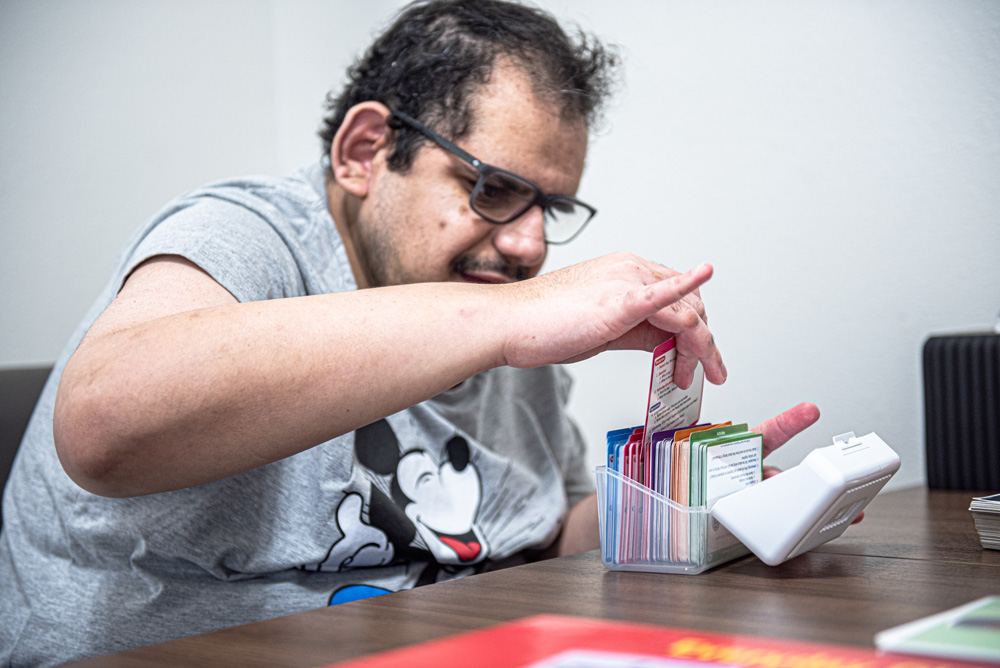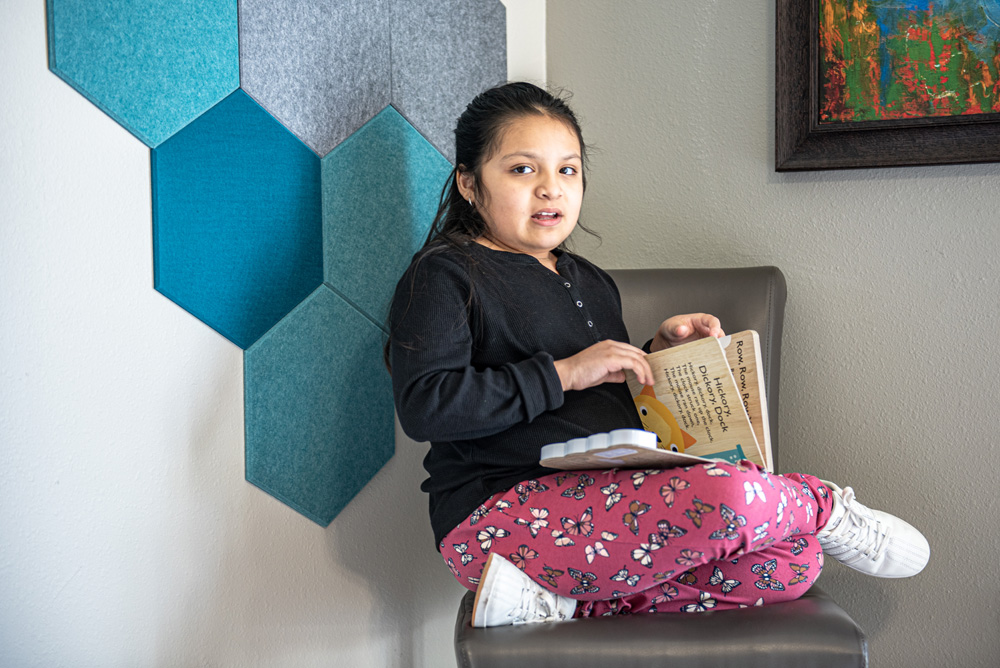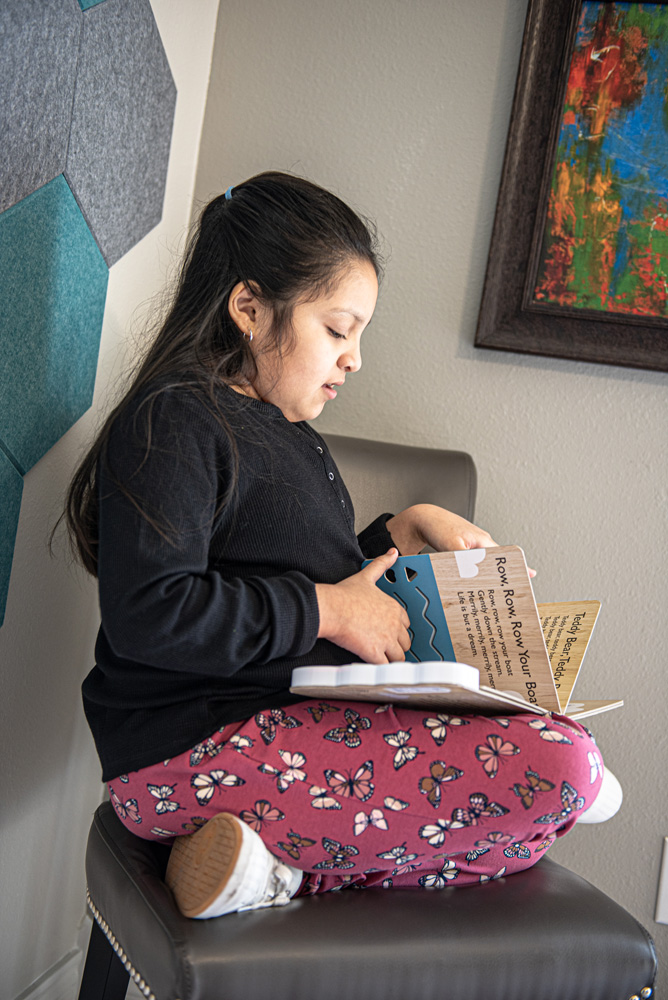Receptive language is the ability to understand words, sentences, and meaning—whether spoken, written, signed, or gestured. It allows individuals to follow directions, respond to questions, and process the information they hear or read.
When understanding language is challenging, a receptive language disorder may be present. Receptive language therapy helps individuals of all ages improve their ability to comprehend language, process information, and respond with confidence.
✔ Vocabulary– Recognizing and understanding the meaning of words
✔ Following Directions – Processing and remembering verbal instructions
✔ Answering Questions – Understanding how to interpret and respond appropriately
✔ Listening Comprehension – Understanding stories, conversations, or classroom lessons
✔ Understanding Grammar – Interpreting sentence structure and relationships between words
Receptive language difficulties may be developmental or acquired, often alongside expressive language or learning challenges.




Receptive language plays a key role in learning, social interaction, and independence. It allows individuals to:
✅ Understand classroom lessons or workplace instructions
✅ Follow multi-step directions
✅ Participate fully in conversations
✅ Build meaningful relationships
✅ Learn new concepts and vocabulary
When receptive language delays go unaddressed, they can impact academic success, self-esteem, and daily communication. Therapy supports improved comprehension, confidence, and participation in everyday life.
Receptive language plays a key role in learning, social interaction, and independence. It allows individuals to:
✅ Understand classroom lessons or workplace instructions
✅ Follow multi-step directions
✅ Participate fully in conversations
✅ Build meaningful relationships
✅ Learn new concepts and vocabulary
When receptive language delays go unaddressed, they can impact academic success, self-esteem, and daily communication. Therapy supports improved comprehension, confidence, and participation in everyday life.
Receptive language challenges may not always be obvious but often show up in subtle behavioral or academic signs.
For Children:
✔ Difficulty following directions, especially multi-step ones
✔ Trouble answering questions accurately
✔ Appears inattentive or off-topic during conversation
✔ Needs repetition or visual cues to understand
✔ Struggles to understand new vocabulary or concepts
For Adults:
✔ Trouble processing verbal instructions or fast-paced speech
✔ Difficulty understanding complex language
✔ Needs information repeated or simplified
✔ Misunderstands questions or figurative language
✔ Appears disengaged in group conversation or learning settings

Receptive language develops steadily throughout life.
In early childhood, it begins with understanding simple words and routines. As children grow, they learn to comprehend more complex language, stories, and concepts. In school, strong receptive language skills are essential for reading comprehension, listening, and learning.
In adulthood, receptive language supports everything from job performance to managing day-to-day communication. Neurological events or cognitive changes—like stroke, brain injury, or dementia—can affect receptive language later in life.
References:


Receptive language challenges may be caused by:
✔ Developmental Delays – Language skills emerging later than expected
✔ Auditory Processing Differences – Difficulty processing spoken information, even with normal hearing
✔ Hearing Loss – Reduced sound access impacting comprehension
✔ Neurological Events – Brain injury, stroke, or degenerative conditions
✔ Cognitive Challenges – Conditions that affect memory, attention, or information processing.
A receptive language evaluation helps determine how well a person understands spoken or written language. You can expect the speech-language pathologist to:
✔ Gather background information and review communication concerns
✔ Observe how the individual follows directions and responds to questions
✔ Assess listening comprehension and vocabulary understanding
✔ Evaluate processing of grammar and sentence structure
✔ Develop a personalized treatment plan based on the findings


Therapy is tailored to each person’s needs, using clear, practical strategies to support real-life understanding.
✔ Concept Development – Building comprehension of key vocabulary and ideas
✔ Listening Strategies – Learning how to focus, filter, and retain information
✔ Direction-Following Skills – Practicing single- and multi-step instructions
✔ Visual Supports – Using pictures, cues, and routines to support understanding
✔ Auditory Processing Techniques – Strengthening listening and response timing

Receptive language is key to navigating the world, learning new information, and participating in conversations. Therapy can help clarify, simplify, and strengthen understanding.
Remember:
✔ Receptive language supports learning, attention, and independence
✔ Early evaluation leads to better outcomes
✔ Therapy helps individuals listen, learn, and thrive
